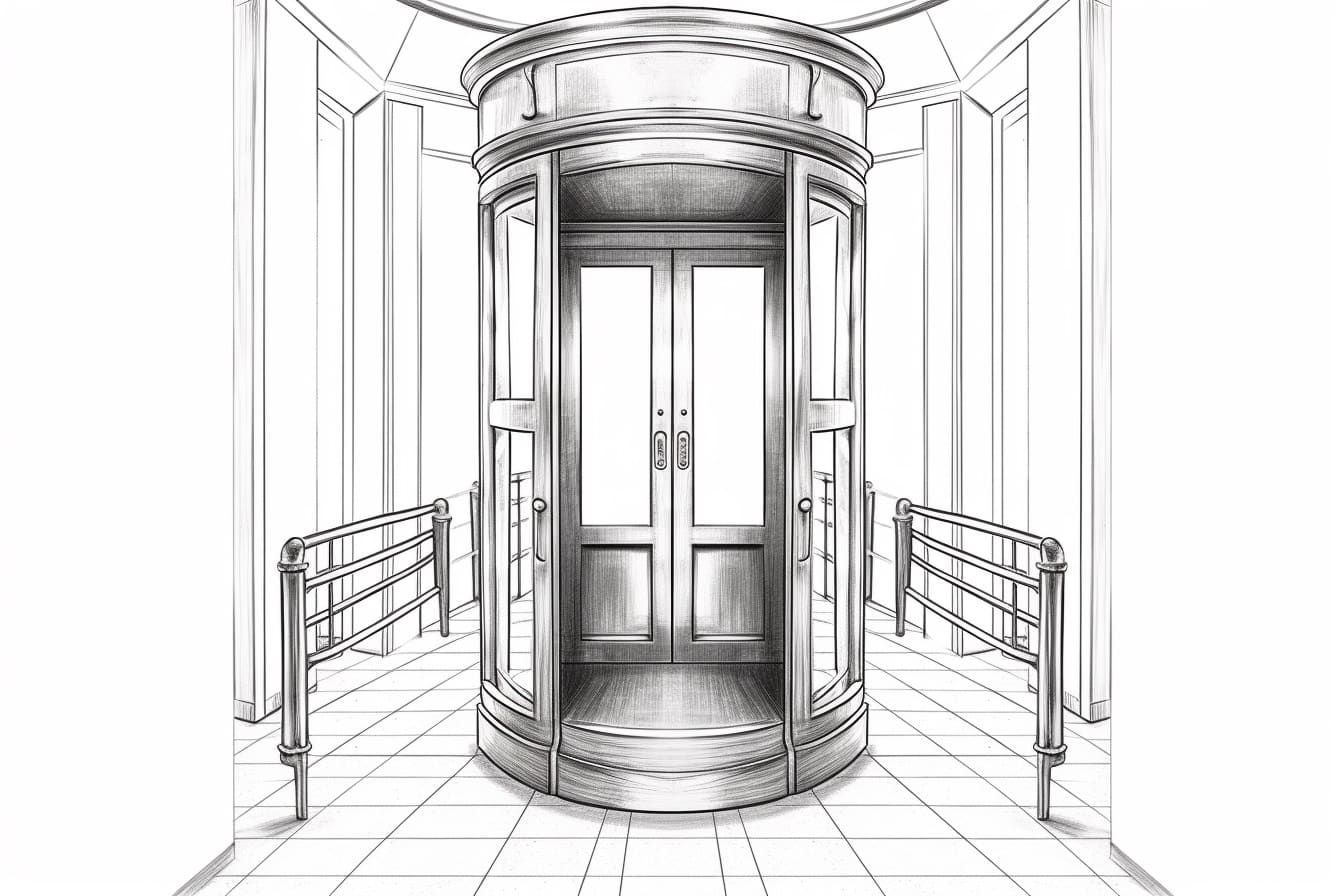Drawing an elevator may seem straightforward at first glance, but the complexities and details that come with this everyday object can make it a fascinating subject to sketch. Elevators are not simply functional machines that transport us from one floor to another; they are also architectural elements that can add character and style to a building. In this drawing exercise, we will explore the various components of an elevator, from the sleek metal doors to the intricate buttons and displays. By paying attention to details such as lighting, reflections, and perspective, we can create a realistic and dynamic drawing that captures the essence of this essential urban feature. So grab your sketchbook and let’s dive into the world of drawing elevators!
Materials Required
To draw an elevator, you will need the following materials:
- Drawing paper or sketchbook
- Pencil for sketching and outlining
- Eraser for correcting mistakes
- Ruler for measuring and creating straight lines
- Fine tip markers or pens for adding details
- Colored pencils or markers if you want to add color to your drawing
- Reference images of elevators for inspiration and accuracy
With these materials, you can create a detailed and accurate drawing of an elevator.
How to Draw an Elevator: a Step-by-step Guide
Step 1: Start with Basic Shapes
Begin by drawing a large rectangle for the main body of the elevator. This will serve as the base shape for the elevator. Add two smaller rectangles on top of the main rectangle to represent the doors of the elevator.
Step 2: Add Details to the Elevator Body
Divide the main rectangle into smaller sections to represent the different floors of the elevator. Add buttons or a control panel near the doors for a realistic touch.
Step 3: Define the Elevator Doors
Draw vertical lines on the smaller rectangles to create the door panels. Add horizontal lines to show the individual panels of the doors. You can also add handles or buttons on the doors for additional detail.
Step 4: Add Depth and Dimension
To give the elevator a three-dimensional look, add shading to the sides of the elevator body and doors. Use darker shading on the sides facing away from the light source to create depth and realism.
Step 5: Refine Details
Add any additional details such as numbers or labels indicating the floors, emergency buttons, or a speaker for communication. Pay attention to small details to make the drawing more realistic.
Step 6: Final Touches
Review your drawing and make any necessary adjustments to ensure proportions are correct and details are well-defined. You can also add a background to place the elevator in a specific environment, such as a building lobby or hallway.
Step 7: Add Color (Optional)
If you choose to color your drawing, use shades of gray for the elevator body and doors to represent metal surfaces. Add different colors for the buttons and control panel to make them stand out.
Step 8: Practice and Experiment
Continue practicing drawing elevators to improve your skills and experiment with different styles and perspectives. Consider drawing elevators in various settings to challenge yourself and expand your artistic abilities.
Final Thoughts
Drawing an elevator can be a fun and rewarding exercise in perspective, proportions, and detailing. Following the step-by-step guide in this article and practicing regularly, you can improve your drawing skills and create realistic and captivating elevator illustrations. Remember to highlight light and shadow, textures, and small details to make your drawing stand out. Keep experimenting with different techniques and styles to enhance your artistic abilities further. With dedication and patience, you can master the art of drawing elevators and other architectural elements with confidence and creativity.
Fun Facts About Elevators
- The world’s oldest operating elevator is located in a 6-story building in the Odessa catacombs in Ukraine. It has been in operation since 1905.
- The Empire State Building in New York City has 73 elevators, including one that goes from the ground floor to the 102nd floor in just 55 seconds.
- The Burj Khalifa in Dubai has the world’s longest elevator travel distance, with one elevator traveling 140 floors at a speed of 36 km per hour.
- The first safety brake for elevators was invented by Elisha Otis in 1852, which allowed elevators to be used in tall buildings without the fear of the elevator falling.
- The world’s fastest elevator is located in the Shanghai Tower in China, traveling at a speed of 45 mph (72 km/h).
- The average elevator speed in a commercial building is around 500 feet per minute, though some high-speed elevators can travel at over 1,000 feet per minute.
- The term “elevator pitch” comes from the idea of being able to pitch an idea or proposal to someone within the time it takes to ride an elevator, usually around 30 seconds to 2 minutes.
- The world’s largest elevator is located in a mine in Russia, capable of carrying up to 220 tons of material at a time.
- Elevators are one of the safest forms of transportation, with an average of only about 27 deaths per year in the United States due to elevator-related incidents.
- The first hydraulic elevator was installed in 1857 in New York City, revolutionizing the elevator industry by allowing for taller buildings to be constructed.
Suggestions for Scenes and Settings for Elevator Drawings
- A futuristic elevator in a sci-fi setting, complete with holographic buttons and sleek, metallic design.
- An ornate, vintage elevator in a historic building, featuring intricate woodwork and stained glass windows.
- A glass elevator ascending through a lush, tropical rainforest with colorful birds and exotic plants visible through the transparent walls.
- An underwater elevator descending into the depths of the ocean, surrounded by schools of fish and coral reefs.
- A magical elevator in a fantasy world, with swirling patterns and glowing symbols on the walls as it transports passengers to different realms.
- An industrial elevator in a gritty urban setting, with graffiti-covered walls and flickering lights.
- An elevator at a bustling train station, with commuters rushing in and out amidst the hustle and bustle.
- An elevator in a haunted mansion, with ghostly apparitions and eerie mist swirling around the passengers.
- An elevator in a space station, with astronauts in futuristic suits and high-tech equipment lining the walls.
- An elevator in a luxury hotel, with opulent decor, chandeliers, and a view of a glamorous city skyline.









